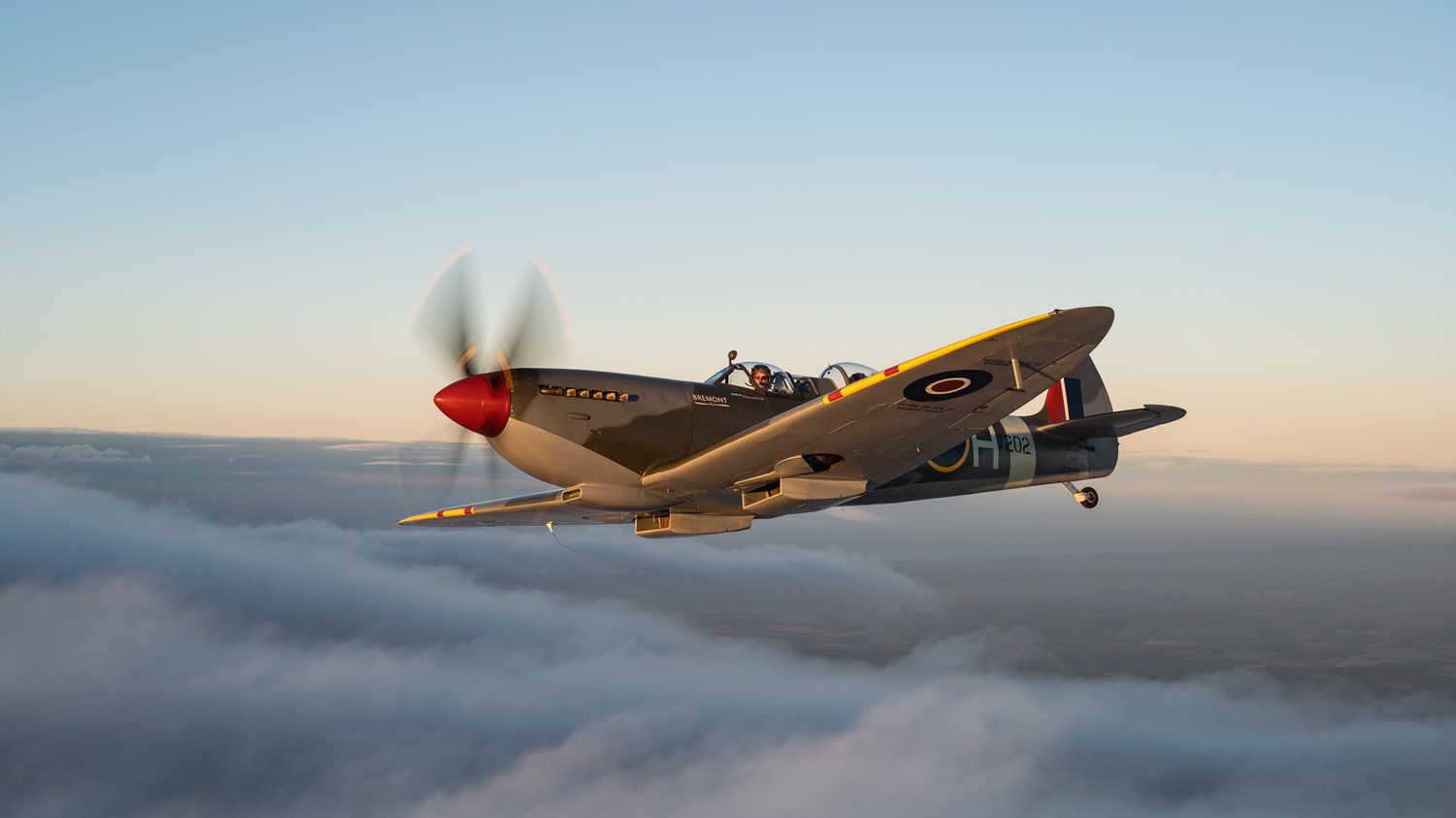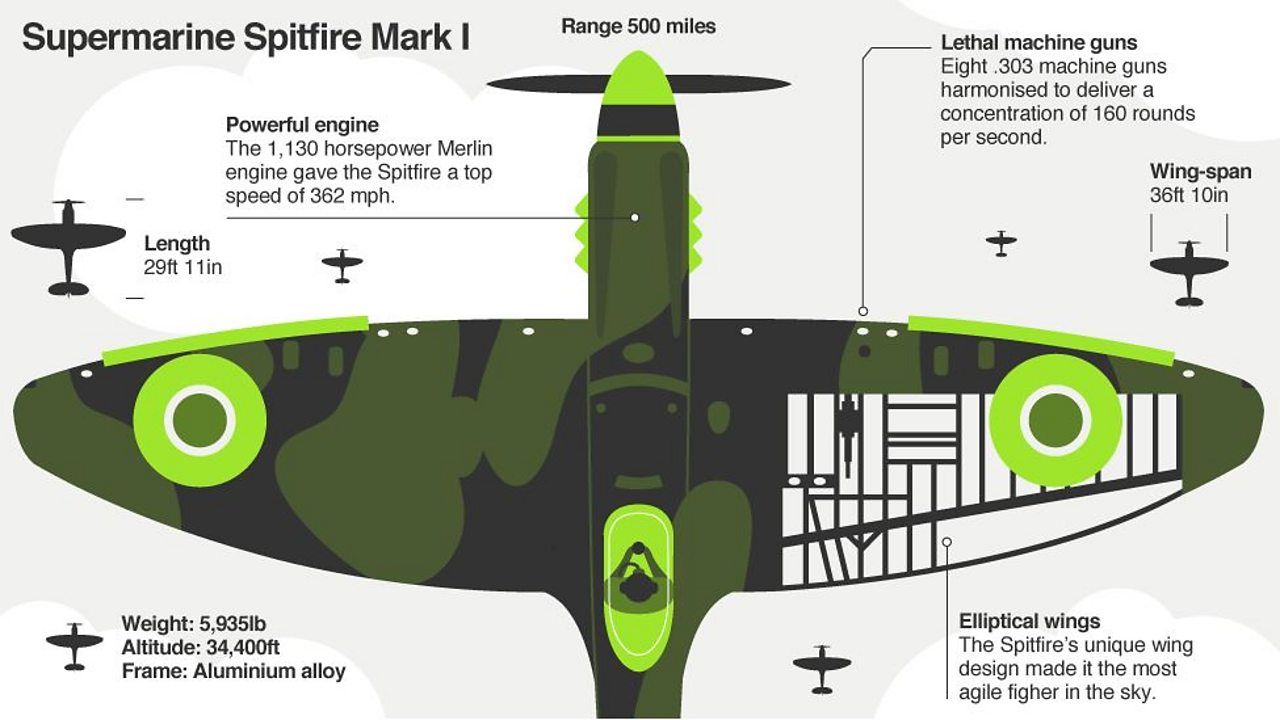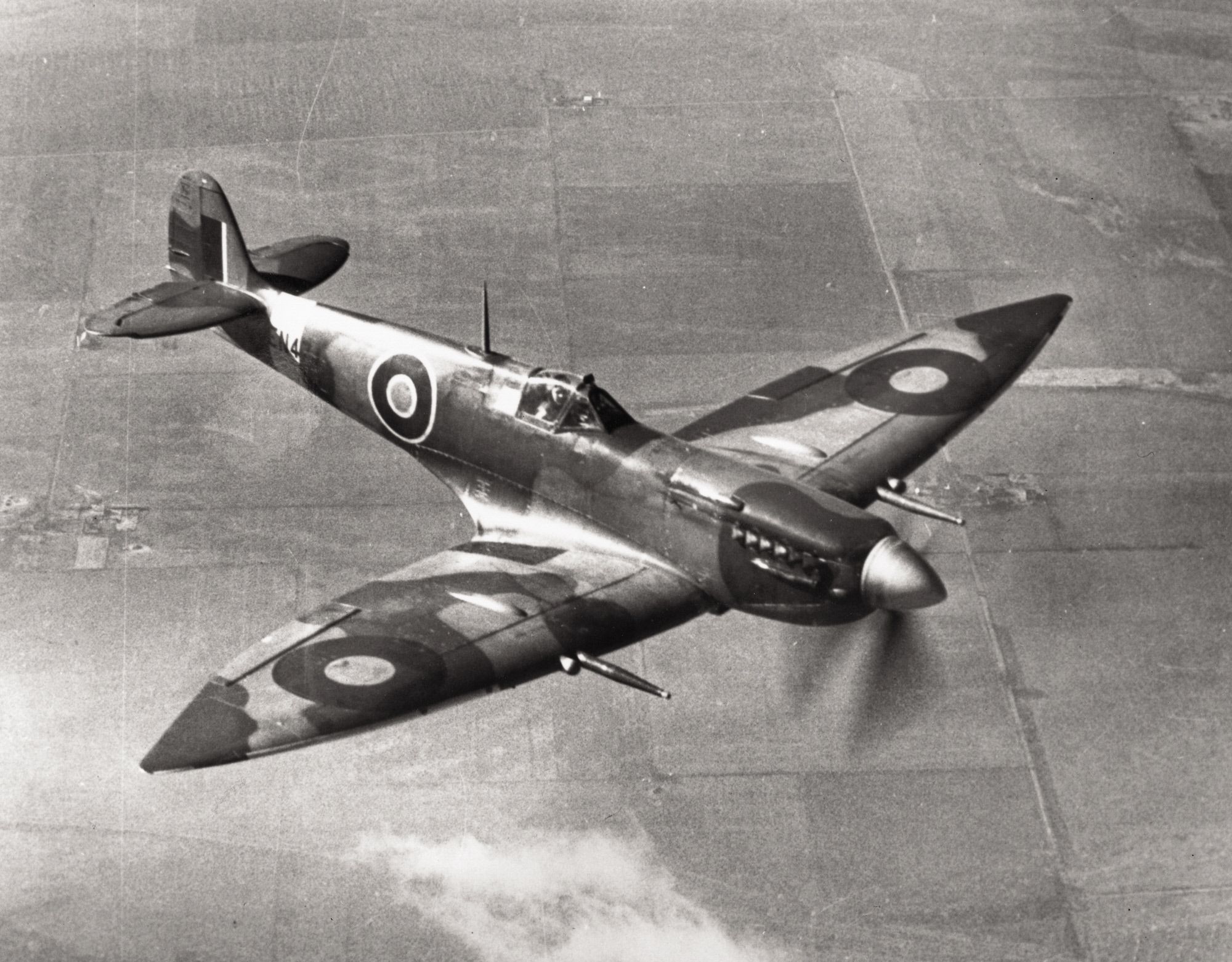The (Supermarine) Spitfire is one of the stars of the World War II air battlefield. But what exactly made its reputation shine so bright? The secret hides in the winning combination of superior specifications, daring design, and the stories that revolve around the fighter.
According to some sources, the production of the Spitfire exceeded by far any other airplane before or after World War II, with a staggering total number of 20,341. What was to be World War II's most widely produced British single-seat fighter rose from a long series of trial and error. The airborne killing machine had a crucial role to play in the Battle of Britain (1940), offering the British an advantage that would tip the fortune in their favor.
The legendary Spitfire soared to the skies for the first time in March 1935, but it was only in 1938 that the mechanical soldier entered service. And thus the story begins.
Daring Design
The man behind the design is Reginald Mitchell from Supermarine Ltd. It all started with a request issued by the 1934 Air Ministry asking for an air fighter with high-performance capabilities and armed with 0.303-inch machine guns. As a response, Reginald delivered the Spitfire.
The airborne killing machine was an elegant appearance in the skies of the battlefield. It soon made a name for itself due to its agile maneuvers along with its aesthetics. What made this fighter so formidable was that the design and functionality were taken into consideration as a whole and thus they complemented each other to bring out the best of both.
Furthermore, the Supermarine Mark I Spitfire had a considerate design, welcoming future changes and upgrades for the engine and weapons. This allowed for the plane to evolve and continue to stay ahead of the opponents, so the plane became faster and stronger, striving to better itself. After the creator, Reginald Mitchell passed away in 1937, the Spitfire fell under the supervision of Joe Smith, who did his part in further developing the creation.
A particularly noteworthy feature is the cockpit, which was carefully designed to minimize space and maximize functionality. Also, regardless of the Spitfire version, the cockpit design remains a reliable constant.
Superior Specifications
The legendary Spitfire was fueled by a 12 cylinder, liquid-cooled Rolls-Royce PV-12 engine, which was later named Merlin (because it was that magical) and could roar up to 1,000 hp. The elegant flight movement, we previously mentioned, was made possible by the thin airfoil elliptical wings and the structure made out of stressed-skin aluminum. Light materials and aerodynamics played a crucial role in ensuring Spitfire's domination in the sky. It was not only one of the easiest to start and maneuver planes, but reliable as well.
There are two main versions to consider, the Rolls-Royce Merlin and Griffon powered fighters. The first of the two is a smooth running but powerful engine, while the latter is famous for its loud growl. The Griffon engine is much larger and much less subtle. Vibrations and sound from the exhaust stacks seep into the cockpit and infuse the pilot.
On the Battlefield
The Spitfire had to pass a trial by fire on the battlefield of World War II before turning into a legend. And its trial was the Battle of Britain (1940). The fighter that was sent into battle was powered by a Merlin engine that slightly exceeded 1,000 hp and could reach a speed of 360 miles/hour and hit the ceiling at 34,000 feet. It was surely a striking appearance, with a wingspan of 36 feet 10 inches and 29 feet 11 inches long. Thus, it exceeded in performance and speed the German Bf 109.
In 1940 the Royal Air Force was under heavy German attack. At the start of the battle, the British had only 640 fighters (Spitfires and Hurricanes) to meet the 2,600 German airborne fleets. Yet Britain concentrated on production and managed to send more and more planes into the battlefield. What is more, the Royal Air Force planned a strategical defense tailored to the capabilities of their planes. And so, the Hurricanes were sent after the bombers, while the Spitfires took on the fighters. The strategy paid off as the battle ended in a victory for Britain. The end loss toll added up to 1,023 planes for Britain but 1,887 for Germany. This battle was over, but there was more in store for the Spitfire. It partook in other important battles as well, including the air battle for Malta and D-Day.
This fighter was a landmark in mechanical innovation, but also served as a key strategical player during the war. The Supermarine Spitfire is not just a formidable fighter, it grew into a symbol of hope and victory, fueled by Britain's endurance during the somber summer of 1940.




